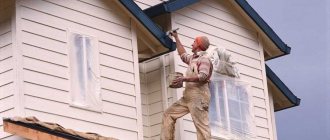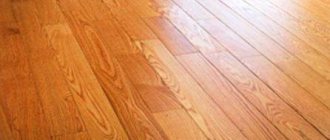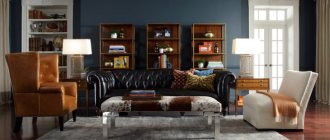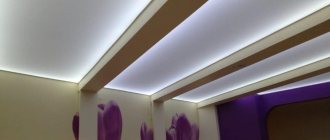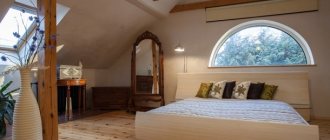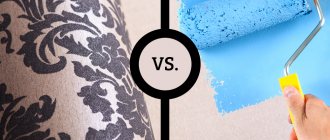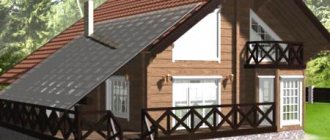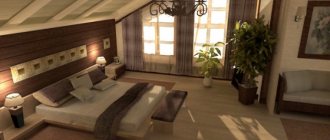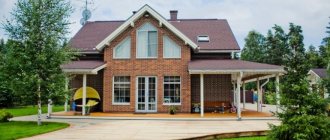Of primary importance when building a wooden house is the quality of the wood used. The choice of wood for building a house should be approached very carefully. Properly selected and applied in accordance with the manufacturer’s recommendations, facade paints, antiseptics, and wood glazes will effectively protect a wooden house from precipitation and UV, and keep it in excellent condition for many years.
Now it’s the 21st century and wood as a construction material is experiencing another surge in popularity. The craving for naturalness and natural materials is understandable. But it is not enough to build a wooden house or cottage, you need to provide them with proper care, and in order for the wood to last a long time and not lose its attractiveness, the house needs to be painted. When builders guarantee that a wooden building will last a hundred years, they mean its timely and correct protection from destruction.
Harmoniously selected color when painting a house
Why you need to protect a tree
Professional builders recommend painting a wooden house right away so that it lasts longer. Unprotected wood is negatively affected by almost all environmental factors. If a living tree is covered with bark, then only painting will protect the logs or boards.
- Exposed wood is destroyed by exposure to the sun's rays. Ultraviolet radiation affects lignin, a substance responsible for the lignification of plant cells. As a result, the wood darkens, becomes loose and damp. A fundamental change in the material occurs after six months of being in the open air. Since painting a wooden house over a damaged surface layer will not bring the desired result, you must first sand the surface to an undamaged material.
The logs of the log house dry out and crack over time.
Under the influence of ultraviolet radiation and temperature changes, the boards darkened and cracked
The cracked end of a log
- The alternation of rain and dry weather causes the wood to periodically swell and dry out unevenly. The result of the process is cracks of varying depths, which gradually increase. The house becomes unsightly and its ability to retain heat decreases. In addition, mold fungi settle in the cracks and rotting begins.
- Temperature changes in winter lead to moisture entering the pores of the wood during the thaw and then freezing. Ice crystals can tear wood fibers, forming cracks in the depths. Repeated repetition threatens that cracks will spread not only on the surface, but throughout the entire thickness of the frame.
Exterior painting of a wooden house creates a protective layer that serves as a barrier to negative influences.
Requirements
What requirements must the interior painting of a wooden house meet?
- The coating must be breathable . The good thing about a wooden house is that up to half of the air exchange in it can be carried out through the walls. Thanks to this property, it is so easy to breathe in log houses even with closed doors and windows.
- Vapor permeability is also welcome . In general, the permeability of walls to water vapor should increase from the inside out to avoid dampness, which, it would seem, makes it possible to use any coatings and materials for interior decoration. Including absolutely sealed. However, in this case, we again negate one of the main advantages of wood - the natural regulation of humidity.
Let us clarify: of course, the vapor permeability of the internal coating is important only if the external coating of the facade allows moisture to pass through. Otherwise, the natural result will be excessive dampness of the walls and their inevitable decay.
- Finally, the finishing material should not be toxic. Agree that it is stupid to live in a wooden house and inhale fumes from phenolic resins or styrene.
Types of paints
The abundance of modern paints and varnishes provides various options for solving the problem of how to paint the outside of a wooden house. All types of exterior or facade paint are divided into:
- glaze, i.e. translucent, preserving the appearance and texture of wood, having antiseptic properties;
- covering paints are oil, acrylic and alkyd paints that form an additional layer on top of the wood.
Types of paints and their differences in composition
Materials differ in composition, drying speed, appearance and other characteristics. Experts have not come to a clear conclusion about which paint is best to paint the outside of wooden houses, so you need to choose taking into account the wood from which the house is built (dry, damp, treated, old, etc.) and the climatic features of the area.
When choosing high-quality products, the preservation of wood is ensured for up to 15 years. Such a long-lasting and reliable effect can only be achieved by following the rules of painting and preliminary preparation.
Painting wooden walls inside the house, price
There are costs associated with any construction work. Painting jobs are no exception. Painting wooden walls inside a house, the price of which is determined by the owner, should also determine the choice of materials. If a budget repair is proposed, you will have to choose between price and quality. You will have to give up expensive acrylic paints and antiseptics.
If painting wooden walls inside a house, the price of which is minimally limited by financial support, then the selection of materials and paints is made from a wider range of quality. Expensive primers and coatings will give interior decoration more detailed results.
But a third option is also possible, in which painting wooden walls inside the house will be used selectively. This solution is most acceptable only if you do all or most of the work yourself.
Wood pre-treatment
In order for the paint to apply smoothly, absorb well and last a long time, you need to prepare the surface for painting. Before treating the outside of a wooden house with any compound, antiseptic or fireproof, it is necessary to level the surface and seal the cracks.
After finishing the construction of the house, it is necessary to seal the joints and putty the cracks
The main condition is that the wood must be dry with a moisture level of no more than 20%, so preparation begins in the dry and warm season. If you put paint on a wet surface, the internal moisture will evaporate and destroy the coating and tear it away from the base.
The dry surface is cleaned of dust and dirt. If stains and stains of resin are difficult to remove, you can use a solvent. It is advisable to sand wood that was previously exposed to the open air mechanically.
After sanding, painting is carried out within 48 hours to ensure that the maximum effect of sanding is preserved.
First, the surface is treated with antiseptic primers or wood impregnations. Sometimes builders take on this work, but they often use the cheapest compounds - not very effective for preserving wood and environmentally unsafe. It is recommended to use water-based antiseptics that protect against the formation of mold, mildew and other biological formations on wood.
Antiseptics for wood
The application of antiseptics is carried out in strict accordance with the instructions indicated on the packaging. You cannot process at subzero temperatures, even if manufacturers offer winter antiseptics.
Preparing the surface of wooden elements for painting
After choosing the composition for painting, it is necessary to prepare the surface for work.
To do this, it is necessary to carry out a number of operations:
- if the house has already been painted previously, the old paint must be completely removed, this is done using coarse sandpaper, wire brushes and other devices;
- a new building should also be prepared - carefully sand the wood, if there are dark spots on the wood caused by mold - they also need to be cleaned and treated with special bleaching compounds that destroy mold and restore color;
- In some cases, when painting with enamels, you should use a primer - this will avoid color heterogeneity and reduce paint consumption.
Also, before painting a wooden house with your own hands, you need to stock up on protective equipment - a respirator, gloves, safety glasses. When working with a spray gun, you should be careful - fumes and fine suspensions of some paints and varnishes can be harmful to health.
Also for work you will need brushes, a roller (when painting log houses they use a very long pile, this allows you to cope with applying paint to an uneven surface) or a spray gun, containers for paint, and a solvent.
The better to paint
Paint for the facade of a wooden house can be translucent, glossy or matte. Since the natural look of wood is most attractive, glazing facade materials, which are available in the form of antiseptics, glazes or oils, are very popular.
The peculiarity of these materials is that they do not hide the structure of the wood. The materials work as impregnations, penetrate deep and create a barrier to getting wet or exposed to ultraviolet rays (UV). Despite their transparency, glaze paints are available in a wide range of colors. The most famous manufacturers:
- Renocoll (Rhenocoll) Germany.
- Teknos Finland.
If there is a desire to hide the surface of the wood, then use façade covering paints, which are divided into:
- oil - made from oils of natural origin and organic solvents;
- alkyd - produced in organic solvents or aqueous solutions of alkyds;
- acrylate (acrylic) coatings - based on acrylic and copolymers (latex, vinyl, silicone).
These paints form an opaque protective film that completely hides the wood grain. Over time, they oxidize, cease to be elastic and crack. Subsequently, the top layer turns into a powdery white substance (paint chalking process). After a few years, the layer will need to be removed completely or partially and the work done again.
Acrylic paints are more expensive and have a high degree of elasticity.
Well-known manufacturers of covering paints:
- Tikkurila (Finland).
- Alpina (Germany).
- Dufa (Germany).
- Beckers (Sweden).
- Dulux (Netherlands).
- Marshall (Türkiye).
Facade acrylic paint Dulux
Tikkurila paints are well known among us
Impregnation for the protection of wooden surfaces from Dufa
Among the Russian brands, the most popular are “Optimist”, “Svyatozar”, “Tex”, “Yaroslavskie Krasny”.
Average paint service life:
- glazing antiseptics – 5 years;
- acrylic – 8–10 years;
- oil – up to 6 years;
- alkyd materials – 7 years.
When comparing different types of paint, consider their pros and cons:
- oil paints – have a high penetrating ability, reliably protect against moisture, but dry slowly (several days depending on the temperature), which is sometimes unacceptable for outdoor work;
- alkyd compositions - have good frost resistance, but crack over time under the influence of UV;
- acrylic - convenient and easy to use, odorless, do not lose color, a new shade is easily obtained by mixing white paint with colorants (colored dyes), but if the house is painted with acrylic paint, then in the future you can only use them.
In recent years, acrylic paints and varnishes have taken a leading place, despite their higher price. Considering how much it costs to paint a wooden house and the effort it requires, it is not advisable to focus on cheap types. It’s better to do it well once than in 2-3 years the house will look sloppy. Immediately choose how to paint the outside of a private house or cottage for a long time , even if you have to invest more.
The total cost of painting depends mainly on the size of the house. This amount will include the cost of antiseptic, putty and paint.
How to choose wood impregnation
Nowadays there are compositions on the market that can satisfy any request and solve any problem. Do you want to maintain or even emphasize the original wood texture? Refer to azures, transparent protective compounds. Azures can be colorless or coloring, with a large or small antiseptic effect, water-based, alkyd or oil-based. The main thing that all azures have in common is their overall transparency . I thought for a long time about where to put the clear varnishes, and in the end I decided: let them be here too.
Transparent compositions, azures
Water-based antiseptics . Among all the azures, the cheapest compositions are water-based antiseptics. They are often supplied as a concentrate and are designed primarily to provide reliable protection of the tree from biological damage. At the same time, often without affecting either the wear resistance of the wood or its aesthetic qualities. Water-based antiseptics are used everywhere as temporary protection before applying something more reliable, but they can also be used independently. May differ in composition depending on the tasks:
Antiseptic "Medera-90", 1 l. Concentrate
Universal antiseptic for interior and exterior use. Completely colorless, does not create a film, and does not interfere with the subsequent application of any other compositions on top of itself. In places without the risk of water washout, it does not lose effectiveness for more than 10 years. Diluted 20 times. Consumption of one liter of concentrate: 70-100 m2.
Bath antiseptic “Medera-70” 1l. Concentrate
Antiseptic for baths and saunas. Used to protect against biodestruction of wood operated under conditions of constant temperature fluctuations and cyclic moistening. Heat resistant. Suitable also for shelves in double rooms. Does not stain wood, does not create a film. Diluted 30 times. Consumption of one liter of concentrate is 100-130 m2.
On the other hand, glazes based on natural oils can tint wood in almost any color using natural dyes that do not fade in the sun, significantly increase its wear resistance and service life, and are mild antiseptics and natural preservatives. ;Can withstand high temperatures, protect wood from moisture and even running water. They can be moisture-proof and heat-resistant, so you can safely cover wooden walls in the bathroom or toilet. node or steam room. Important : In a colorless form they do not protect against ultraviolet radiation, but with the addition of mineral dyes they do an excellent job of this task. Mineral colors are used to color the oil, giving a soft tinting shade to the wood. Unlike acrylic dyes, oil colors do not fade in the sun at all, and although ultraviolet radiation can destroy them over time, this problem is relevant only for outdoor work. Suitable for both soft and hard wood, but more expensive compositions will be universal in terms of wood selection. The choice, again, depends on the specific tasks:
Oil for walls and ceilings “Martyanov” 1l.
Oil for walls and ceilings "Martyanov" is used for the protection and decorative finishing of wooden walls and ceilings indoors. Environmentally friendly, safe for people and animals. Sold colorless, tinted using non-fading mineral dyes. Suitable for softwood. Consumption: One liter of oil in 1 layer is enough for 14-17 m2.
Steam bath oil from Siberia, from
Contains specially brewed heat-resistant linseed oil, natural turpentine from essential oils of coniferous trees as a solvent and pine resin (resin) as an antiseptic. It is used to treat walls, ceilings and shelves both in dry high-temperature saunas and in wet “Russian” steam rooms. Does not increase shelf temperature. Consumption: One liter of oil in 1 layer is enough for 13-15 m2.
Colored transparent oil “Osmo” “Dekorwachs Transparent” 0.75 l.
Transparent oil-glaze with a large selection of colors is suitable for protecting and painting any indoor surfaces. It is used both as a primer for special protective oils and as an independent coating in 2 layers. Environmentally friendly, safe for people and animals, has European certificates of quality and safety. Suitable for both hard and soft wood. Does not fade in the sun, is easy to clean, and easy to restore. It has no disadvantages other than the high price. Consumption: One liter of oil in 1 layer is enough for 17-20 m2.
Water-based and acrylic-based tinting glazes are located somewhere between the options described above. Water-based and acrylic impregnations combine the low cost of chemical products with their external beauty. They are distinguished from oil glazes by less mechanical protection, brighter and more saturated acrylic dyes, but fading over time, and a shorter service life.
You can’t expect either environmental friendliness or durability from these compounds, but the price is really captivating. Whether such savings, as they say, are worth the trouble is up to you to decide.
They are available both in the form of pure impregnations and in the form of film-forming compositions. So in some cases, there may be a decrease in the vapor permeability of the wood (I will explain all the disadvantages below) and exfoliation.
Lucky . Although not inherently impregnations, transparent varnishes can also be called glazes. These are film-forming compounds that provide a pleasant glossy or matte shine and provide almost 100% protection for wood from any external influences. Sounds great? Exactly until you start to think about what life is like for wood under varnish. Wood under varnish does not breathe (breathing is the natural vapor exchange of wood), which means it is not able to evaporate moisture from one of its sides. Such an unnatural imbalance in steam exchange in itself is not too critical if the lining, imitation timber, planken or block house is treated with varnish, however, sooner or later it will still lead to deformation of the material and cracking of the varnish. But for timber or logs, the wall materials of a log house, unimpeded steam exchange is simply vital, so I would not recommend using varnishes to directly protect the wooden walls of a house. Another use of varnish that you need to be careful with is using it in damp areas. Typically, sellers recommend thick-film yacht varnish for such tasks. Yes, such a varnish provides 100% protection against water, but only until it is damaged. Any small crack or chip in a wet place will immediately saturate the wood with water, which (surprise) will simply have nowhere to evaporate. Rotting and destruction directly under the varnish will not take long to occur, which means that the owner will have to completely sand off the varnish and reapply. And yet, 100% protection and an expensive, glossy look are still a strong argument in favor of varnish. But only where it is truly justified. Let me make a reservation right away that all of the above applies only to the walls of wooden houses. For floors, countertops and other products inside the house, it is necessary to compare impregnations and varnishes separately.
Opaque compositions, paints
If you don’t want to see the texture of the wood, and the wood in the interior decoration was chosen not for its beauty, but for some other, utilitarian reasons, then your choice is opaque impregnations and paints. Such compositions completely paint over the texture, creating a uniform one-color coating.
The products in this section of the article can be divided into 2 categories: film-forming compounds and opaque impregnations .
The first include all types of opaque paints:
Alkyd compositions . Cheap film paints interfere with vapor exchange, penetrate shallowly into wood, as a result of which they are quickly destroyed under the influence of sun, water, wind, so they are used mainly in interior work. If necessary, they can be easily removed without the need for deep sanding of the wood. Acrylic dyes that fade in the sun are used. Inexpensive.
Water-based acrylic paints have acceptable vapor permeability, although they suffer from the second disease of film coatings: if damaged, they require complete removal and sanding. They slowly fade in the sun, and, in general, they can be called quite a good decent coating for interior work.
Oil paints . They have all the disadvantages of film coatings described above. They fade in the sun. As cheap as possible. I do not recommend it for covering walls. Only for furniture, and then you can look for better options.
Among opaque opaque impregnations, only one quality contender can be distinguished; this is Osmo opaque oil for interior work.
decorwachs from the Creative and Intensive Tone series. Oil from this series has sufficient strength for wall coverings, excellent vapor permeability, and excellent appearance. The only downside is the rather high cost of the product.
Colored oil "Osmo" transparent "Dekorwachs Intensive Töne" 0.75 l.
Opaque oil-based paint with a large selection of colors is suitable for protecting and painting any indoor surfaces that are not subject to abrasion. Can be used to paint floors and furniture before applying protective oils with hard wax. Environmentally friendly, safe for people and animals, has European certificates of quality and safety. Suitable for both hard and soft wood. Does not fade in the sun, is easy to clean, and easy to restore. It has no disadvantages other than the high price. Consumption: One liter of oil in 1 layer is enough for 18-21 m2.
I hope I was able to answer your unasked questions and gave you an understanding of what exactly you want to paint your wooden walls with. If you have any questions, my number is +375 29 120-36-55, my name is Sergey and I am a specialist in wood protection and preservatives at the ChTUP ArtSide company. Let's talk!
Which color to choose
The choice of color depends only on the wishes of the homeowner. Manufacturers offer a wide range of shades. Typically, preferences depend on the design of the house and the location where it is located. To make the house visually blend with its environment, various shades of green, sand, and brown are chosen.
There are no restrictions on the choice of color, the main thing is aesthetics
To highlight a building in the area, you can use bright white, blue, and yellow. The most effective is the combination of two colors - light and dark.
A significant part of developers are more focused on the practical effect of painting, for example, dark colors attract rays, the surface heats up too much and cracks form on the wood. Light shades reflect light and do not fade longer, but dirt is more visible on them. The light gray color fades the least.
If resin appears on the wood, they prefer light dyes so that the wood does not heat up. Resin secretions are less noticeable against a background of cream, white, or ivory.
Often, paint is chosen to match or contrast with the color of the roofing material.
Technology
Preparing the walls
Painting wooden walls inside the house begins with their preparation.
What is it?
- The wood must be completely dry at the time of coating. For kiln-dried timber or factory finishing lining this is not a problem; but a frame made of wood with natural moisture should dry out and shrink within a year.
- The walls are impregnated with antiseptic. The instructions are relevant even for rot-resistant species - cedar and larch: the price of the antiseptic is negligible compared to the cost of replacing the only crown of a log house.
Antiseptic primer will reliably protect the wood from rotting and woodworms.
- Wide cracks and other noticeable defects in the walls are puttied. Acrylic wood putties are used for painting; for impregnation - tinted putties on the same acrylic base or a homemade mixture of PVA glue and sawdust. The advantage of the latter option is that after the glue dries, the defect you repair will exactly match the tone of the wall.
- The surface is polished. For construction timber, however, an electric planer is more suitable: you will have to remove at least a couple of millimeters.
Tip: the slower you move the plane along a beam or board, the smoother its surface will be. If you hurry, you will get a “wave” that will have to be eliminated with an additional pass.
Removing old coatings
Often, during the renovation process, the owner of an old wooden house is faced with the fact that the walls have already been painted earlier.
What to do with the covering left over from previous residents?
- Acrylic water-based emulsion can be safely painted with paint of identical composition. If the colors do not match, it is worth pre-isolating the old coating with a primer.
- Oil, alkyd and nitro enamels are softened with a construction hairdryer and removed with a steel spatula. Remains of paint are removed with an appropriate solvent; then the walls are sanded.
Removing paint using a spatula and a hair dryer.
- Wooden walls that have darkened over time are bleached with a special composition for wood or... ordinary “Whiteness,” a cleaning agent based on sodium hypochlorite.
Primer
Acrylic paint for interior decoration of a wooden house is applied to pre-primed walls. The purpose of using a primer is to reduce the consumption of much more expensive paint; in the case of old, overdried wood, the soil will also strengthen its surface layer.
No special compositions are required here: a regular penetrating primer based on the same acrylic resins is quite suitable. It is applied to the walls with a wide brush or spray in one pass.
Painting
How to apply paint for a wooden house inside?
Actually, no non-standard solutions are expected here either. The water-based emulsion is diluted with water to the consistency of rich milk and applied to the walls with a wide brush. The roller gives a more uniform distribution of paint, but does not paint over seams and other irregularities in the wood.
The total number of layers is from two to four. The criterion for completing the work is the absence of gaps. The movement of the brush in each layer is perpendicular to the previous one; in this case, the last layer should be applied in such a way that the stripes from the brush are parallel to the direction of incidence of light from the window or lamp.
Painting wooden lining.
Impregnation
Painting the inside of a wooden house with your own hands, as we see, is done without any special frills. What about impregnations?
Here the coating process is not so much more complicated as it requires much more time. Oil-wax impregnations are not applied to the surface with a roller or brush, but are rubbed into the wood with some force with a swab.
Like that.
What do we achieve with this method of application?
- Maximum penetration depth. From a practical point of view, this means a longer service life of the impregnation (oils and wax also evaporate, although much slower than water) and better protection against dampness, fungus and drying out.
The photo demonstrates the hydrophobic properties of the impregnation. The block on the left is impregnated with an oil-wax mixture.
- Minimum composition consumption. Due to the lower average consumption per unit of surface, much more expensive natural impregnations compared to synthetics cost a comparable amount.
Sequence of painting work
To properly paint a wooden house, you need to follow the technology and sequence of actions. Painting a frame house follows the same rules as a log house.
- First of all, the surface is cleaned of dust, construction debris, and resin stains - otherwise, mixed with the paint, foreign particles will remain on the facade. If this is not the first treatment of the building, then carefully remove the previous paint and clean the surface down to wood.
- Then mechanical grinding of the surface is carried out manually or using a grinding machine. Sanding and further painting are carried out with a short break, no more than 3 days, so that the cleaned base does not have time to suffer from external factors.
- In an old house, cracks, unevenness and damaged areas are puttied. If nails or other metal elements protrude from wood, they are coated with a special primer designed for metal.
- After this, the entire surface is covered with a primer with antiseptic properties and impregnations. The primer will not only perform protective functions - after its application, paint consumption will noticeably decrease and it will apply more evenly.
- Then they move directly to painting. The paint is applied with a roller or sprayed with a spray gun. It is necessary to take into account that acrylic facade paints and varnishes are too thick and viscous - only a professional tool is suitable for them. To use household sprayers, the paint will have to be thinned, which means the layer will be thinner than the manufacturers recommend.
- Painting is done in several layers. Each subsequent layer is applied only after the previous one has completely dried. When painting with a roller or brush, apply the paint along the grain of the wood.
How to choose topcoat paint for a wooden house
To make a choice before purchasing, you should ask yourself the question - which surface is intended for painting. All products are different and this or that area must be subjected to appropriate processing. So:
- Oil alkyd. They are definitely suitable for wooden facades - this paint for a house made of timber adheres well to the surface. Protects wood from mold due to the presence of an antiseptic. Dries quickly.
- Glossy. Resistant to sunlight, humidity, temperature changes. However, they can be easily removed with any solvent if the result does not suit the owners.
- Water-dispersed. Suitable for interior painting as they do not contain volatile toxic compounds. They apply without smudging and dry quickly. They have protective functions against fungus and mold, and tint wood.
- Acrylic. They will certainly find application in interior spaces. Low consumption - 5 m² per 1 liter.
If you need to repaint the house, it will be problematic to remove it - it has good permeability. A heat gun should be used with caution, heating the surface and then scraping it off with a spatula.
Minimum consumption per 1 m². The protective film will protect the facade from moisture accumulation. Resistant to cracking during shrinkage or temperature changes.
Wear-resistant, quick-drying, attractive in appearance - the palette of shades is unusually rich. They have a “liquid plastic” effect, that is, delamination is excluded - the entire painted surface appears as a single canvas.
And now the necessary products have been purchased. It remains to find out how to paint a timber house correctly. The further result depends on the quality of the process.
